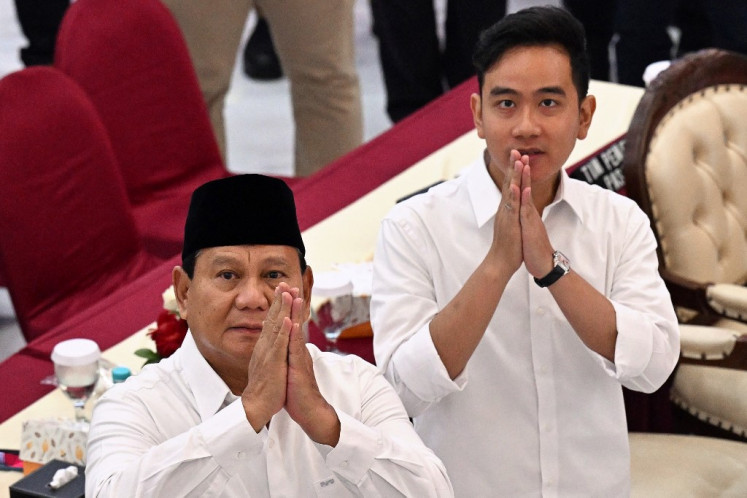Batik selected for UNESCO cultural heritage list
Indonesians have been asked to wear batik on Oct
Change Size

Indonesians have been asked to wear batik on Oct. 2, following UNESCO’s decision to add the traditional dyeing technique to its Intangible Cultural Heritage list.
The listing, which will give the age-old batik tradition some degree of protection under the UNESCO charter, will be made official at an event in Abu Dhabi, the United Arab Emirates, between Sep. 28 and
Oct. 2.
To acknowledge the listing, President Susilo Bambang Yudhoyono has asked all Indonesians to wear batik.
“Batik is regarded as a cultural icon with its own uniqueness. It contains symbols and a deep philosophy of the human life cycle — and it was submitted by Indonesia as a non-material element of cultural heritage,” Coordinating Minister for the People’s Welfare Aburizal Bakrie told a press conference at Bogor Presidential Palace on Monday.
“We’ve been told that batik has been recognized as an element of global cultural heritage produced by Indonesians. The President has called on all Indonesians to wear batik on Oct. 2, to celebrate batik.”
Batik is a wax-resistant dyeing technique used on textiles. Due to modern advances in the textile industry, the term is also used for fabrics incorporating traditional batik patterns that are not necessarily produced using traditional batik techniques.
In the past, Indonesians, mostly adults, wear batik only at formal events. Nowadays it has become increasingly popular even among the younger generation with batik factories starting to manufacture more wearer-friendly and fashionable batik outfits.
Many office workers now wear batik on a daily basis, while local designers compete to produce more attractive designs.
While batik originated in Javanese courts, several other regions in Indonesia also have their own styles of batik. The fabric is also widely worn in countries such as Malaysia, Singapore and Thailand.
Aburizal explained that the jury team from UNESCO, before declaring batik an element of global cultural heritage, had inquired about the origins of Indonesian batik, on the government’s protection of it and to what extent batik was a part of local community life.
Culture and Tourism Minister Jero Wacik said batik was therefore Indonesia’s third tradition to secure UNESCO’s recognition as an element of non-material global cultural heritage.
In 2003, the UN body named wayang (Indonesia’s traditional shadow puppets) and keris (traditional wavy blades) as elements of non-material cultural heritage.
“And now we are submitting angklung (traditional musical instrument made of bamboo) as an element of global cultural heritage from Indonesia,” Jero said.
“We will keep fighting for our heritage one tradition at a time.”









